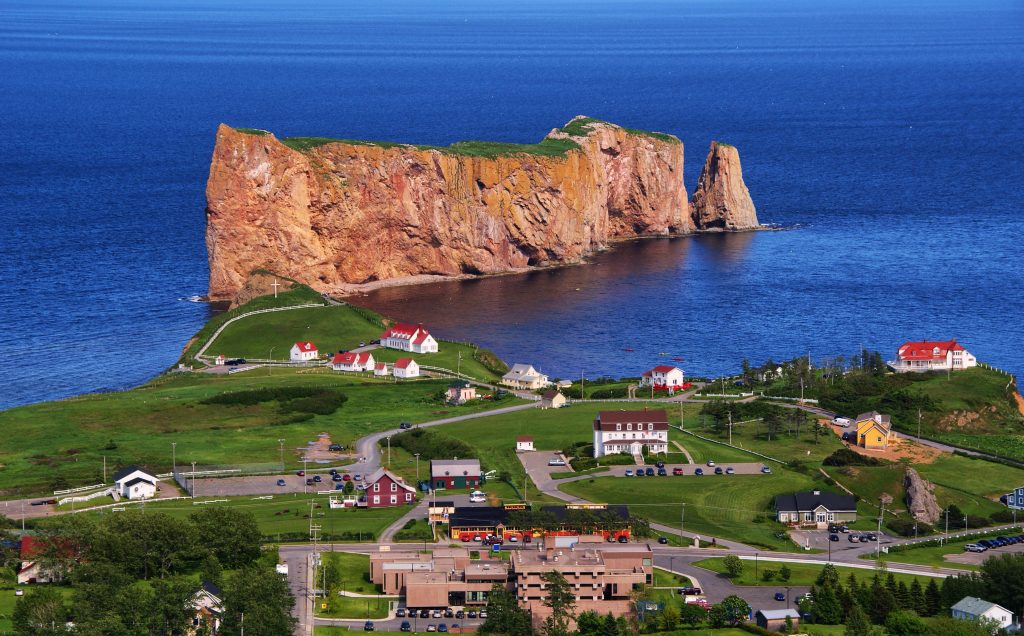If you love discovering new natural wonders in Canada, read on. Quebec’s Parc national de l’Île-Bonaventure-et-du-Rocher-Percé is home to a plethora of globally significant wonders, including Percé Rock – AKA one of the largest natural arches in the world.
Percé Rock
Named by explorer Samuel de Champlain in 1607, the ancient limestone monolith is situated on the scenic Gaspé Peninsula, which extends from the Matapedia Valley into the Gulf of St. Lawrence. Visitors can get up close and personal via a 75-minute cruise from the town of Percé, or explore the area on foot during low tide via a brief four-hour time window.
Measuring an impressive 471 metres wide, Percé Rock is home to a variety of birds, and happens to be located next to one of the world’s largest bird sanctuaries (over 280,000 bird varieties!) on the historic Bonaventure Island – the second half of the national park.
Here, the Northern Gannet variety comes in first with over 110,000 birds – the largest of its kind in the world.
Recent Posts:
Canada’s largest concentration of monoliths is in Quebec & one looks like a castle
This national park in Quebec is home to 18th century chapels & trails through wetlands

Bonaventure Island & the National Park
Beyond Percé Rock, visitors can learn more about the ecology of the area at the Discovery and Visitors Centre in the historic Charles Robin area, which includes La Neigère Information Centre.
Hikers can choose from four heritage trails totalling 15 km, where they’ll discover hidden meadows, evergreen forests, and of course, a variety of rare birds and wildlife.
Note that visitors can access the National Park for the day for $9.55 per person.
So there you have it, explorers! Percé Rock is definitely a crown jewel of the province, and the National Park is well worth the trip out.
Happy adventuring!
Parc national de l’Île-Bonaventure-et-du-Rocher-Percé
Where: La Neigère, rue du Quai Percé, Quebec
Information on Parc national de l’Île-Bonaventure-et-du-Rocher-Percé is from Sépaq and is accurate as of the publication date.





